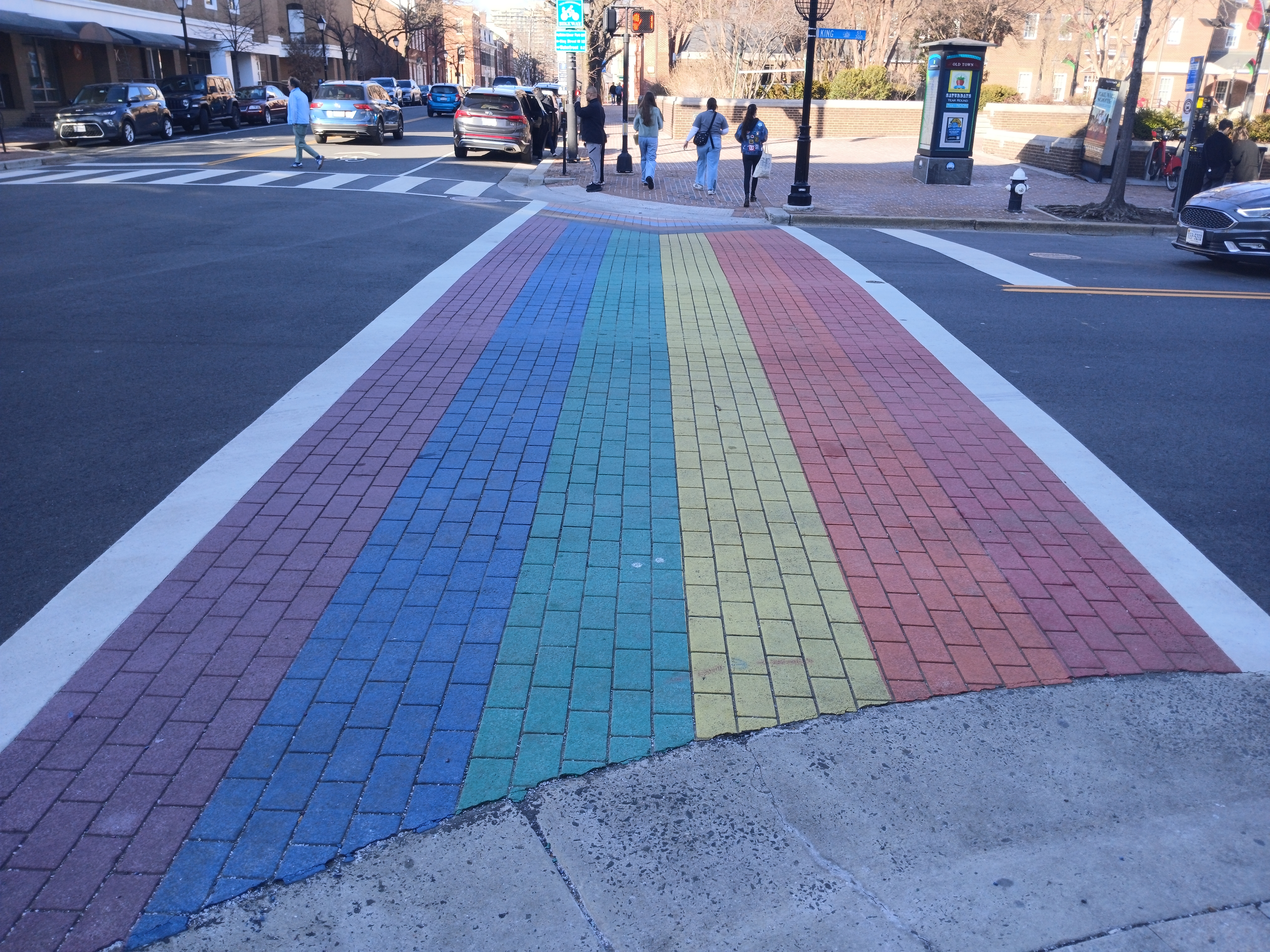After U.S. Rep. Andrew Clyde, R-Georgia, introduced a bill in March 2025 to require the District of Columbia to paint over the Black Lives Matter street mural or lose federal funding, it removed it (Kim 2025).
On July 2, 2025, Sean P. Duffy, the U.S. Secretary of Transportation, sent a letter to state governors announcing an initiative to make streets safer and more efficient. Concentrating on “non-freeway arterials,” he stressed the need to keep crosswalks and intersections free of distractions, so as “to make the entire roadway right-of-way easier to interpret and navigate for all users, including pedestrians, vehicle operators, and automated vehicles alike.”
Transportation Secretary targets political messages on crosswalks
Data do not indicate that intersections with street art are more dangerous than others (Rozsa 2025), and although Duffy indicated that “Roads are for safety, not political messages or artwork,” his directive seemed to be particularly directed toward rainbow crosswalks like one in Orlando, Florida, commemorating the 2016 mass shooting at the Pulse night, that were designed to indicate solidarity with the LGBTQ community. On social media, Duffy observed that “Taxpayers expect their dollars to fund safe streets, not rainbow crosswalks (Parker 2025).
The Florida Department of Transportation (FDOT) has also threatened the removal of state highway funds to jurisdictions that do not remove such asphalt art. Florida’s Assistant Secretary of Transportation Will Watts classified “social, political or ideological messages or images” as examples of non-compliant art (Parker 2025).
Asphalt art is political speech
Asphalt art is clearly political speech, and homeowners (at least those not governed by Home Owners Associations with prohibitions against them) presumably have the First Amendment right to paint whatever political messages they might choose on their own driveways. The U.S. 2nd Circuit Court has ruled in Women for America First v. Adams (2022), however, that “when the government speaks for itself, it can pick and choose which viewpoints it favors and does not have to offer a forum for competing private viewpoints” (Hudson 2022).
This being said, if governments ban groups from painting pro-LGBTQ or pro-Black Lives Matter asphalt art on public streets, the doctrine of content neutrality would likely also prevent it from supporting anti-LGBTQ or anti-Black Lives Matter art as well.
Moreover, it may be unwise for either states of the national government to condition funding on removing asphalt art that local communities and their governments believe may serve either to heal psychic wounds or to indicate their inclusiveness, especially if the public safety rationale is a mere pretext.
David Andersson, who is a spokesperson for the Arts Team at Bloomberg Philanthropies, has argued that where it has been installed, such art reduced car crashes with pedestrians and cyclists.
John Vile is a political science professor and dean of the Honors College at Middle Tennessee State University.

